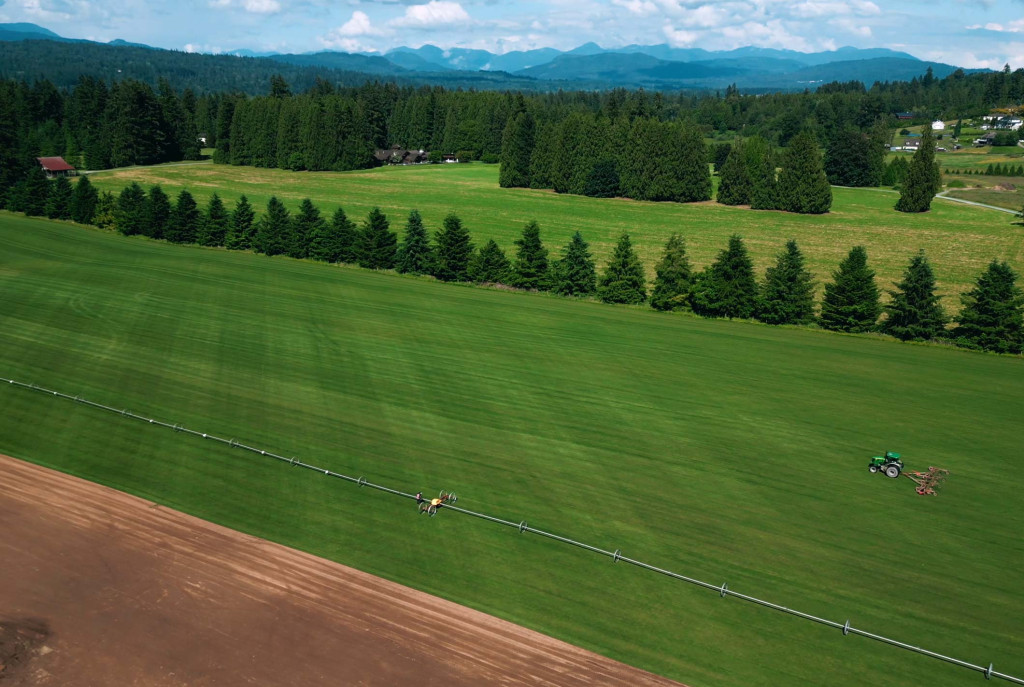
What do moss and weeds have in common (besides driving homeowners crazy)? They can both be prevented by a healthy lawn.
Judging by the number of brightly colored bags of herbicide and weed ‘n’ feed found in every garden center across Canada, weeds and moss are a common problem for homeowners and commercial property owners alike. But before reaching for the nearest bag of ‘opportunist-be-gone’, homeowners should take a moment to do their homework first to find the most effective solution to weed and moss issues.
It’s a common misconception that moss destroys healthy lawns. The reality is that mosses thrive under conditions where grasses struggle, leading moss to move in as lawns die out. To effectively rid the lawn of moss, homeowners should start by identifying what factors are damaging their lawns (and encouraging moss). After that, it’s a simple matter of creating an action plan and working towards promoting a robust, healthy lawn.
While homeowners can purchase any number of chemical products that will kill off moss in the lawn, the effect is only temporary if the underlying problems go untreated.
Did you know? Many of the products used to kill lawn moss are known for staining concrete, brick, and other hardscape materials. Even worse, they can be hazardous to your pets.
Our recommendation is that any homeowner struggling with moss should begin by identifying the various factors that led the lawn to thin or die out initially. Do-It-Yourself soil test kits can be especially useful at this stage because these products allow homeowners to determine the pH of their soil. Some kits may also test for the presence of important nutrients, indicating whether or not the lawn might benefit from fertilizer or topdressing. Wth this knowledge in hand, homeowners can create a plan of action to ride the lawn of moss long term, while creating an environment their lawn will thrive in.
Lawn running a little acidic? Call our office at 1.888.888.7072 to talk to our staff about soil amendments for creating a more neutral soil pH, such as lime amendments!
Unlike moss, weeds are aggressive opportunists that will attempt a total lawn takeover at every opportunity. In a healthy lawn the density of the grass roots does an effective job of out-competing (and preventing) weed growth. Once a lawn becomes stressed and begins to thin it’s only a matter of time before the weeds move in.
For homeowners dealing with a small amount of weeds, we recommend investing in a good old fashioned daisy grubber, as it’s more effective (and environmentally friendly) than chemical sprays. For large-scale weed problems, we recommend that homeowners start over completely with a new sod lawn. Unlike overseeding or killing the lawn with harmful chemicals, a professional sod installation leaves the homeowner with a beautiful, ready-to-use lawn that effectively buries weed seeds too deeply to germinate, and suppresses any new ones that come along – from day one.
It’s a proven fact that a healthy, dense lawn is the most effective way to prevent moss and weeds from taking over, but how to achieve it? Over the last 50 years our staff has come to the unanimous conclusion – implementing a yearly lawn maintenance plan is the most efficient and cost-effective way to achieve that desirable healthy lawn.
When repairing small areas of thinning or baldness throughout the lawn, a quick patch with sod or regular overseeding with an appropriate seed blend can be extremely effective. Give our office a call at 1.888.888.7072 to talk with our staff about getting the right sod or seed product for you.
As with everything, there comes a point when fixing the problem is going to be more expensive than simply buying a brand new lawn. The good news is – we’re here to help.
Homeowners who work with Western Turf Farms to replace their lawn often see prices as low as $2.00 per square foot for professional sod installation, with that added benefit of achieving a ready-to-use lawn that looks great from day one. In the Vancouver area, small lot lawns tend to be around 1,250 square feet. At $2 per square foot, homeowners can replace their entire lawn for about $2,500 once installed – and that’s an investment that will last for ten years or more if properly maintained! Learn more about cost effective lawn replacement on our blog!
Ridding your lawn of moss and weeds may be hard – but it’s certainly not impossible. With a little knowledge and the right tools, and environmentally friendly solution is just around the corner!
Order fresh sod now or request a custom quote for your project.
Save with a Yearly membership. Custom fertilizer program. Fertilizer, topsoil, seed delivered to your door before you need it. Don’t forget, we will remember for you!
Western Turf Farms Abbotsford
39183 No.5 Road Abbotsford, BC V3G 2G3
Western Turf Farms Langley
7880 240 Street Langley, BC V1M 3P9
© Copyright 2025, all rights reserved by Western Turf Farms. By using our website you agree to our Disclaimer and Privacy Policy.